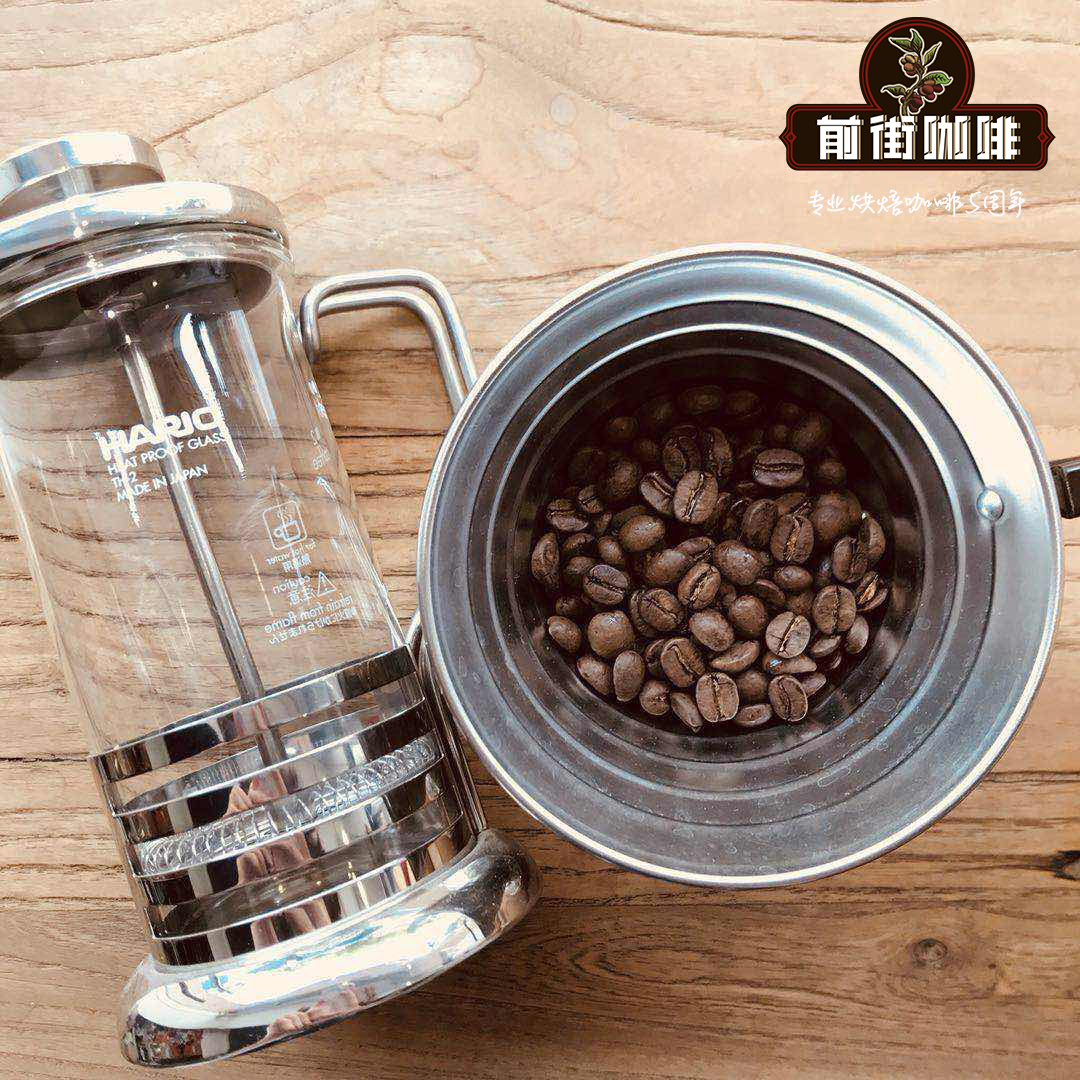How to choose coffee beans from which aspects to choose reliable coffee beans

Professional coffee knowledge exchange more coffee bean information please follow the coffee workshop (Wechat official account cafe_style)
Most people will buy coffee beans in places like supermarkets, but I suggest you avoid them as much as possible. Apart from doubts about the freshness of coffee beans sold in supermarkets, there are many other reasons, perhaps the biggest of which is that the pure joy unique to specialty stores cannot be found in supermarkets. In a small coffee shop, you may meet people who are passionate about coffee and have a lot of coffee knowledge. it is helpful to get some professional advice before choosing your coffee beans. sometimes you can try it before you pay for it. There are professionals who provide services, and it is more likely to buy a bag of coffee beans you really like, especially if you can tell them which coffee beans they like.
Selected coffee beans are on sale in specialty stores
Concentration indicator
When buying coffee beans in the supermarket, you can often see a concentration index on the side of the bag, which has nothing to do with the concentration (how many coffee beans you need to brew a packet of coffee). It mainly refers to how much bitterness you can taste in this bag of coffee beans. This index of richness is usually directly related to the depth of roasting, with light roasted coffee generally having a lower richness index and deep roasting being higher. I will try to avoid choosing coffee beans with intensity indicators on the bags, as they are usually made by bakers who pay less attention to quality and flavor performance, even if there are still exceptions.
Source traceability / resume of place of origin
There are thousands of coffee roasters in the world, as well as countless coffee bean estates and roasting methods. Each packet of coffee has a different price, and the manufacturers' marketing methods are also easy to cause confusion. My goal of running this self-media is to tell you where the coffee comes from and to tell you about the relationship between the origin and the flavor of the coffee. I think the best answer is: please buy coffee beans with clear sources as much as possible.
In most cases, you can find out which estate or cooperative makes the coffee beans, but not every coffee-producing country can provide such a detailed resume. In different producing countries, each link of the coffee bean trade has different degrees of source traceability. In Latin America, the vast majority can provide resumes as detailed as manor names, as these coffee beans are grown on small-scale private land; in other regions, even small-scale private land is very uncommon, sometimes due to trade restrictions in some countries, coffee beans have lost some resume information at the time of export.
Keeping a batch of coffee beans with complete production history data throughout the coffee supply chain increases the cost of coffee beans, which can only be rewarded when coffee beans are sold at a higher price. This means that only high-quality coffee is worth investing in the resume system of origin, and the increased cost will weaken the competitiveness of low-quality coffee in the market. In an industry full of moral considerations and stereotypes of exploiting third world countries, knowing exactly where a coffee bean comes from is a powerful message. Thanks to the development of information technology, especially the rise of social media, we can now find more about the close and frequent interaction between coffee producers and end consumers.
The golden rule of fresh coffee
Everyone agrees that freshly roasted coffee is better. Here are my suggestions:
1. Buy coffee beans with a baking date on the bag.
two。 Try to buy only coffee beans within two weeks of roasting. .
3. Buy only the amount you can drink in two weeks at a time.
4. Only buy unground ones and go home and grind them yourself.
Store coffee beans at home
Once the coffee beans begin to age, it's hard to stop, as long as you buy fresh coffee beans and use them up relatively quickly, it will have less impact on the flavor of the cup. Here are a few ways to keep it as best you can at home:
1. Cut off from the air: if the bag can be sealed repeatedly, make sure it is re-sealed after each use. If it is not possible to completely seal it, modify it to a container that is isolated from the air, such as a sealed can or a container specially designed to store coffee.
A container isolated from the air, the dry and cool environment is very heavy
two。 Store in the shade: light will accelerate aging, especially in the sun. if you store coffee in a transparent container, put the whole container in an opaque cardboard box.
3. Don't put it in the fridge: this is what most people do, but it doesn't extend the life of coffee beans and may stain the smell of other foods in the fridge.
4. Keep it dry: if you can't keep the coffee beans in a container isolated from the air, at least keep them in a non-humid environment. To keep the coffee beans for a long time, you can consider putting them in the freezer, which will delay aging, but you must first put the entire package in an airtight container isolated from the air. When using coffee beans again, you must thaw completely before opening the sealed container, but you only need to unfreeze the amount you want at a time.
Freshness
In the past, most people did not keep coffee beans as fresh food. some people did not realize the problem of aging because they had only instant coffee in their minds. The expiration date of coffee bean bags sold in supermarkets is usually within 12 to 24 months after the baking date. So coffee beans are considered to be storable food products, even if they are safe to drink within two years after the production date, but if they are stored that long, the coffee tastes terrible. In addition, for sellers, not treating coffee beans as fresh food can make their jobs easier, but this is not good news for consumers.
The boutique coffee industry does not provide a correct idea of how long coffee beans will age, nor does it let people know how long coffee beans will exceed their shelf life.
Aging effect
Two phenomena occur during the aging of coffee beans: first, there is a slow and continuous loss of aromatic compounds. Aromatic compounds are the source of aroma and flavor of coffee and are highly volatile. So the longer the beans are kept and the more compounds are lost, the less interesting the coffee will taste.
The second phenomenon is oxidation and damp aging, which develops new flavors that are usually not very good. Once the coffee tastes obviously aging, the original personality is likely to have disappeared. Aged coffee usually tastes plain, with wood and cardboard flavors.
The deeper the coffee is roasted, the faster it ages, because it produces many pores, allowing oxygen molecules and moisture to easily infiltrate the beans and initiating aging.
Let the coffee "rest"
On the bags, it is often seen that the makers suggest that the coffee beans should be "set still" for a period of time before they are officially brewed, but this creates more confusion. After the coffee beans are roasted, a series of chemical reactions that turn brown will produce large amounts of carbon dioxide, and most of the gas remains inside the coffee beans and is released slowly over time. The exhaust effect will be very strong in the first few days after baking, and then slow down. Pouring hot water on the coffee powder releases the gas quickly, which is why we can see many small bubbles when making coffee.
Espresso is brewed by high-pressure extraction, which makes the brewing process difficult when there is still a lot of carbon dioxide in the beans, because carbon dioxide blocks the extraction of flavor components. Many cafes exhaust coffee for 5 to 20 days before using coffee beans, which contributes to the stability of extraction.
END
Important Notice :
前街咖啡 FrontStreet Coffee has moved to new addredd:
FrontStreet Coffee Address: 315,Donghua East Road,GuangZhou
Tel:020 38364473
- Prev

What's so expensive about a $500 cup of coffee? $803 a pound coffee. What does it taste like?
Professional coffee knowledge exchange More coffee bean information Please pay attention to coffee workshop (Weixin Official Accounts cafe_style) Boutique coffee has been popular all over the world in recent years, but if a cup of coffee costs 75 US dollars (about 500 yuan), where is it? When the bidding began for Panama's prizewinning beans, everyone wondered how high prices would go. It's because last year Barna
- Next

What is the motivation for drinking coffee? What are you drinking coffee for?
Professional coffee knowledge exchange more coffee bean information please follow the coffee workshop (Wechat official account cafe_style) what do you drink coffee for? Is living in a big city too busy, no matter how to catch up with sleep can not be made up, you must hypnotize yourself with caffeine "I am energetic"? Or in the boring daily life, go to the cafe to order a cup of latte and dress up as a literary youth to create waves for life.
Related
- Customers have "changed" Manner's new products! Shop assistant: Please don't mess around!
- Remove sockets in customer areas at Starbucks stores?! Netizen: I won't go if I really tear it down
- What is the difference between the taste steps of sun-dried coffee and washed coffee? Why is sun-cured coffee sweeter and washed coffee sour?
- The recipe for salty grapefruit dirty is revealed! Coffee Festival salty grapefruit dirty coffee making materials parameters ratio milk share!
- How about the flavor of Sunlight 74158 at Sidamo Banshaha Mathieu Processing Factory in Ethiopia? 74158 Share the proportion of coffee brewing parameters!
- What effect does Italian American coffee with filter paper have? Will coffee taste better if it is put on filter paper at the bottom of the powder bowl?
- What is the color difference in coffee beans? What are the characteristics of honey processed coffee beans? Why are the anaerobically treated coffee beans uneven in color?
- How does novice Xiaobai quickly get started and make coffee? Newbies learn to make coffee by hand and share the specific steps and process process!
- Costa tea has a shelf life of 100 years?! Expert: Unable to verify
- It's a huge uproar! American milk addition was rejected by Manner employees?!

